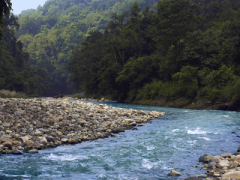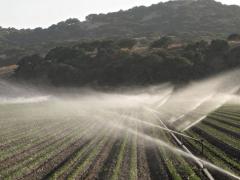Hindcasting harmful algal bloom risk due to land-based nutrient pollution in the Eastern Chinese coastal seas
Harmful algal blooms (HABs) have been increasing in frequency, areal extent and duration due to the large increase in nutrient inputs from land-based sources to coastal seas, and cause significant economic losses.
In this study, we used the “watershed-coast-continuum” concept to explore the effects of land-based nutrient pollution on HAB development in the Eastern Chinese coastal seas (ECCS). Results from the coupling of a watershed nutrient model and a coast hydrodynamic-biogeochemical model show that between the 1980s and 2000s, the risk of diatom blooms and dinoflagellate blooms increased by 158% and 127%, respectively. The spatial expansion of HAB risk caused by dinoflagellates is larger than that of diatoms. The simulated suitability of the habitat for bloom of Aureococcus anophagefferens, a pico-plankton of non-diatom or dinoflagellate, in the Bohai Sea is consistent with observations spatially and temporally. To halt further nutrient accumulation in the ECCS, reductions of dissolved inorganic nitrogen (DIN) (16%) and dissolved inorganic phosphorus (DIP) (33%) loading are required. To improve the situation of distorted DIN:DIP ratios, even larger reductions of DIN are required, especially in the Bohai Sea. Our approach is a feasible way to predict the risk of HABs under the pressure of increasing anthropogenic nutrient pollution in coastal waters.
Authors
Specifications
- Publication title
- Hindcasting harmful algal bloom risk due to land-based nutrient pollution in the Eastern Chinese coastal seas
- Publication date
- 28 January 2023
- Publication type
- Article
- Publication language
- English
- Magazine
- Water research
- Issue
- vol 231
- Product number
- 5374




